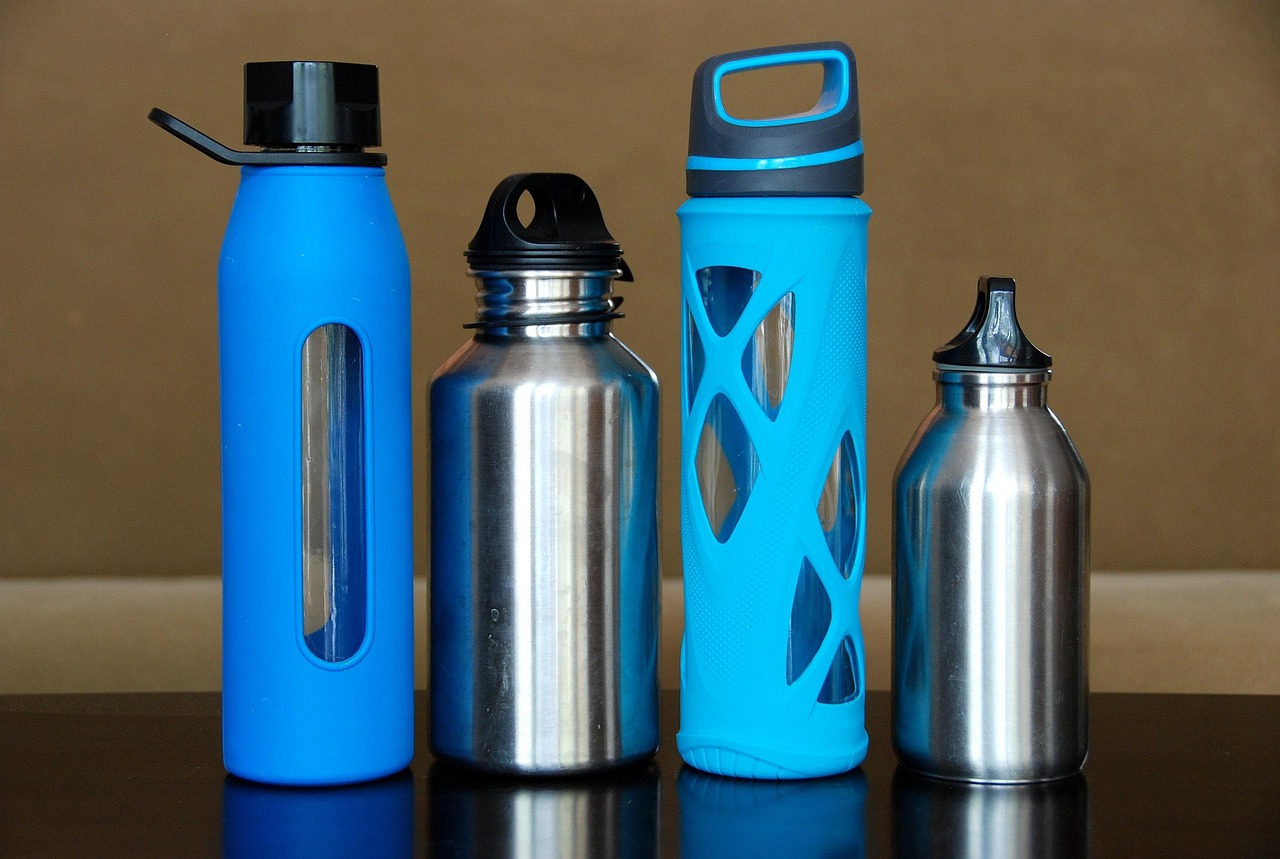ANA Healthy Nurse, Healthy Nation® Blog: Best Practices for Cleaning Your Water Bottle
Published
3 tips to protect against mold and harmful germs
With summer in full swing, staying hydrated is a daily essential for your health. And an eco-friendly, reusable water bottle is the perfect companion to ensure your thirst remains quenched throughout your day.
Many people carry a water bottle everywhere — from home to the gym to work and back. However, in their quest to consume adequate fluids, they may overlook a crucial detail: keeping those bottles truly clean. Although it might look fine on the outside, without regular and proper cleaning, a water bottle can quickly become a breeding ground for germs.
Rather than boosting your health, that water bottle may harm it — by exposing you to dangerous microorganisms.
The Dirty Truth About Water Bottles
So, how germ-ridden can a reusable bottle really be, especially if you only put water in it? Steel yourself — you may be in for a surprise.
Water quality experts at WaterFilterGuru.com conducted a study to answer this very question. They swabbed and compared bacteria counts in a variety of reusable bottles to those in common sources of household germs.
The study found that on average, reusable water bottles contain 40,000 times more bacteria than a toilet seat — whoa! They also contain significantly more bacteria than a pet water bowl and a kitchen sink. Ew.
Think about everything that touches your water bottle throughout the day. Bacteria can be easily transferred from your hands or mouth to your bottle. And your bottle’s warm, moist environment helps those germs thrive and reproduce.
The Effects of Water Bottle Bacteria on Your Health
Many kinds of bacteria can propagate in water bottles if they aren’t well cleaned regularly. The WaterFilterGuru.com researchers discovered two primary types of bacteria on the water bottles they tested: gram-negative bacteria (GNB) and Bacillus.
GNB are a category of microorganisms that includes E. coli. They cause a wide variety of illnesses, including pneumonia and meningitis. Even more concerning, GNB are becoming more antibiotic-resistant. This makes these bacteria especially dangerous in health care settings.
Bacillus can cause gastrointestinal illness and food poisoning. In people with weakened immune systems, it can also cause serious infections in your eyes, respiratory system, and cuts or wounds.
In addition to bacteria, reusable water bottles provide a habitable environment for mold, which can trigger allergies.
Common Cleaning Oversights
Are you walking around with a germ-ridden water bottle? You just might be if you’re guilty of one of these common cleaning mistakes:
It’s easy to neglect a proper cleaning session after a long, busy shift. But with a little intention and the proper tools, you can ensure your bottle offers germ-free hydration day after day. Read on for simple tips and tricks.
Lids can be washed in the top rack of your dishwasher or soaked in a bowl of soapy water. If your bottle has a straw, use a pipe cleaner with dish soap to clean it.
Out With the Old
Reusable water bottles don’t last forever. Even stainless steel bottles break down over time, and this can cause chemicals to transfer into your water. In general, steel bottles last around 3 years. Reusable plastic bottles should be replaced yearly.
Your bottle may need replacing sooner than these guidelines if it has:
A Small Task With Big Health Implications
Cleaning your reusable water bottle daily may seem like a pain, but this small thing plays a big role in protecting your health.
By making bottle hygiene part of your daily and weekly routine, you can help ensure every sip you take supports your well-being (rather than putting it at risk). A quick rinse isn’t enough — so give your bottle the thorough cleaning it deserves. Your body will thank you!
What’s your go-to method for keeping your water bottle clean? Share it in the comments!

Not a member of Healthy Nurse, Healthy Nation (HNHN) yet? Join today!
Sign up for our monthly challenges!
Many people carry a water bottle everywhere — from home to the gym to work and back. However, in their quest to consume adequate fluids, they may overlook a crucial detail: keeping those bottles truly clean. Although it might look fine on the outside, without regular and proper cleaning, a water bottle can quickly become a breeding ground for germs.
Rather than boosting your health, that water bottle may harm it — by exposing you to dangerous microorganisms.
The Dirty Truth About Water Bottles
So, how germ-ridden can a reusable bottle really be, especially if you only put water in it? Steel yourself — you may be in for a surprise.
Water quality experts at WaterFilterGuru.com conducted a study to answer this very question. They swabbed and compared bacteria counts in a variety of reusable bottles to those in common sources of household germs.
The study found that on average, reusable water bottles contain 40,000 times more bacteria than a toilet seat — whoa! They also contain significantly more bacteria than a pet water bowl and a kitchen sink. Ew.
Think about everything that touches your water bottle throughout the day. Bacteria can be easily transferred from your hands or mouth to your bottle. And your bottle’s warm, moist environment helps those germs thrive and reproduce.
The Effects of Water Bottle Bacteria on Your Health
Many kinds of bacteria can propagate in water bottles if they aren’t well cleaned regularly. The WaterFilterGuru.com researchers discovered two primary types of bacteria on the water bottles they tested: gram-negative bacteria (GNB) and Bacillus.
GNB are a category of microorganisms that includes E. coli. They cause a wide variety of illnesses, including pneumonia and meningitis. Even more concerning, GNB are becoming more antibiotic-resistant. This makes these bacteria especially dangerous in health care settings.
Bacillus can cause gastrointestinal illness and food poisoning. In people with weakened immune systems, it can also cause serious infections in your eyes, respiratory system, and cuts or wounds.
In addition to bacteria, reusable water bottles provide a habitable environment for mold, which can trigger allergies.
Common Cleaning Oversights
Are you walking around with a germ-ridden water bottle? You just might be if you’re guilty of one of these common cleaning mistakes:
- Forgetting to clean the cap or mouthpiece
- Neglecting to disassemble bottles with built-in straws or filters before cleaning
- Thinking a “quick rinse” at the end of the day is good enough (it’s not)
It’s easy to neglect a proper cleaning session after a long, busy shift. But with a little intention and the proper tools, you can ensure your bottle offers germ-free hydration day after day. Read on for simple tips and tricks.
- Do a Daily Clean With Dishwashing Soap
Lids can be washed in the top rack of your dishwasher or soaked in a bowl of soapy water. If your bottle has a straw, use a pipe cleaner with dish soap to clean it.
- Incorporate a Weekly Deep Clean
- Hydrogen peroxide: Make a 1:1 mixture of water and hydrogen peroxide (3 % concentration) in a spray bottle. Spray every surface of your water bottle, lid, and accessories. Let it sit for 10 minutes before thoroughly rinsing and letting the bottle air dry.
- Vinegar: Combine a 1:1 mixture of water and distilled white vinegar in a spray bottle. Spray every surface, then let your water bottle and accessories sit for 30 minutes. Rinse well and air dry.
- Bleach: Mix 2 teaspoons of plain (unscented) bleach in a gallon of water. Soak your water bottle and accessories for 2 minutes, then rinse well and air dry.
- Let It Dry Completely
Out With the Old
Reusable water bottles don’t last forever. Even stainless steel bottles break down over time, and this can cause chemicals to transfer into your water. In general, steel bottles last around 3 years. Reusable plastic bottles should be replaced yearly.
Your bottle may need replacing sooner than these guidelines if it has:
- Cracks, dents, or scratches
- Discoloration on the inside
- Foul smell or taste
A Small Task With Big Health Implications
Cleaning your reusable water bottle daily may seem like a pain, but this small thing plays a big role in protecting your health.
By making bottle hygiene part of your daily and weekly routine, you can help ensure every sip you take supports your well-being (rather than putting it at risk). A quick rinse isn’t enough — so give your bottle the thorough cleaning it deserves. Your body will thank you!
What’s your go-to method for keeping your water bottle clean? Share it in the comments!

Not a member of Healthy Nurse, Healthy Nation (HNHN) yet? Join today!
Sign up for our monthly challenges!
Blog Nutrition
07/07/2025 9:37am CDT



Post a Comment or Question